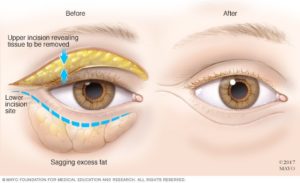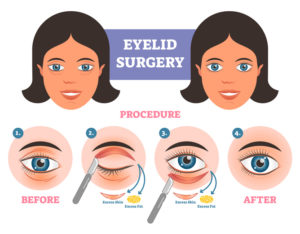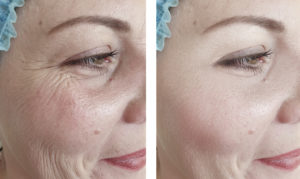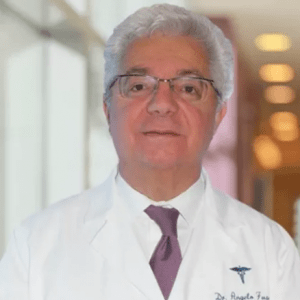Blepharoplasty
Blepharoplasty is a type of surgery that repairs droopy eyelids and may involve removing excess skin, muscle and fat. As you age, your eyelids stretch, and the muscles supporting them weaken … Read More
Top Doctors For Blepharoplasty Treatments
Top Hospitals For Blepharoplasty Treatments
Blepharoplasty
What does the Blepharoplasty eye procedure mean?
Blepharoplasty (BLEF-uh-roe-plas-tee), also known as eyelift surgery, is a type of surgery done to improve or enhance the appearance of the eyelids by that repairs repairing the droopy eyelids and may also involve removing excess skin, muscle, and fat. As the person becomes old, their eyelids stretch, and the muscles supporting them weaken. As a result, excess fat may gather above and below the eyelids, causing sagging eyebrows, droopy upper lids, and bags under the eyes. Besides making a person look older, severely sagging skin around the eyes can reduce the side vision (peripheral vision), especially the upper and outer parts of the field of vision. Blepharoplasty can make the eyes appear younger and more alert while reducing or eliminating these vision problems. Picture Courtesy: MayoClinic
Picture Courtesy: MayoClinic
Who is the right candidate for Blepharoplasty surgery?
Blepharoplasty can be chosen as a treatment option for a person who is suffering from the conditions described below:- Baggy or droopy upper eyelids
- Excess skin of the upper eyelids that interferes with the peripheral vision
- Excess skin on the lower eyelids
- Bags under the eyes
When is Blepharoplasty medically necessary?
Blepharoplasty becomes medically essential when a droopy eyelid is caused by more serious conditions like a stroke, brain tumor, or cancer of the nerves or muscles. In addition, neurological disorders affect the nerves or muscles of the eyes.How to prepare for eyelid surgery/ Blepharoplasty?
Blepharoplastic surgery is done by a plastic surgeon specializing in eye surgeries (Oculoplastic surgeon). Before the procedure, the surgeon will thoroughly examine the patient, do a physical assessment. The surgeon will record the patient’s medical history, and perform some vision examinations. Once the patient is physically fit for the procedure, the surgeon discusses regarding surgical approach, the benefits of the surgery, and associated risk factors, in detail. In addition, the patient will be advised to stop taking a few medications such as aspirin, ibuprofen, naproxen, and warfarin. They should also quit smoking and drinking for several weeks before the surgery [1].At the time of procedure:
 Picture Courtesy: Kelsey plastic surgery
Eyelid surgery is done under local or general anesthesia, where the patient is unconscious throughout the procedure with IV sedation.
At the time of the procedure, if the patient has to be operated on both upper and lower eyelids, the surgeon generally works on the upper eyelid first.
First, the surgeon makes an incision within the natural crease on the eyelid, removes the excess amount of skin, fat, and muscles and closes the incision with the help of sutures. The incision lines are designed so that the scars formed after the surgery will conceal within the natural structures of the eyelid.
Next, the surgeon makes an incision below the eyelashes or inside the lower lid for lower lid surgeries. Again, the surgeon removes or redistributes the excess fat, skin, or muscle and closes the incision by sutures [2]. Finally, a small bandage is placed on the eye.
Picture Courtesy: Kelsey plastic surgery
Eyelid surgery is done under local or general anesthesia, where the patient is unconscious throughout the procedure with IV sedation.
At the time of the procedure, if the patient has to be operated on both upper and lower eyelids, the surgeon generally works on the upper eyelid first.
First, the surgeon makes an incision within the natural crease on the eyelid, removes the excess amount of skin, fat, and muscles and closes the incision with the help of sutures. The incision lines are designed so that the scars formed after the surgery will conceal within the natural structures of the eyelid.
Next, the surgeon makes an incision below the eyelashes or inside the lower lid for lower lid surgeries. Again, the surgeon removes or redistributes the excess fat, skin, or muscle and closes the incision by sutures [2]. Finally, a small bandage is placed on the eye.
After the Procedure
 Picture Courtesy: Kelsey plastic surgery
The patient is shifted to the recovery room for close observation. Depending on the patient’s condition, the doctor will decide on discharge advice.
The patient will be advised to take pain killers to minimize the post-operative pain, lubrication ointments and cold compresses to apply to minimize the swelling and bruise. The patient should have a regular follow-up with the doctor after getting discharged.
Picture Courtesy: Kelsey plastic surgery
The patient is shifted to the recovery room for close observation. Depending on the patient’s condition, the doctor will decide on discharge advice.
The patient will be advised to take pain killers to minimize the post-operative pain, lubrication ointments and cold compresses to apply to minimize the swelling and bruise. The patient should have a regular follow-up with the doctor after getting discharged.
FAQ
1. What are the instructions to be followed after getting discharged?
Here are a few of the instructions which have to be followed after going home
- The patient should regularly take medications and apply ointments as advised by the doctor, which aids in healing and avoiding infections.
- Initially, the patient might experience swelling, bruising, irritation, dry eyes, and discomfort after the procedure. The patient is advised to take medications, cold compresses, and ointments in such cases.
- Have regular follow-ups with the surgeon.
- Avoid straining or heavy lifting or swimming for a week after the procedure.
- Gently clean the eyelids and apply eye drops or ointments regularly.
- Avoid smoking. Avoid rubbing your eyes.
- Avoid using contact lenses for 1-2 weeks.
- Protect the eyelids from sun and wind
- Sleep with head raised above the chest level for a few days.
2. What are the risks associated with the Blepharoplasty procedure?
Some of the risk factors associated with the procedure are:
- Infection, bleeding
- Dry and irritating eyes
- Injury to the eye muscles
- Discoloration of the skin
- Difficulty in closing the eyes
- Temporary blurring of vision and loss of eyesight.
- Anesthesia risk [3]
3. What are the temporary changes a person might experience after the surgery?
Changes a person might experience after the procedure are:
- Temporary blurring of vision or loss of vision
- Watering eyes
- Light sensitivity
- Double vision
- Swelling or puffiness in the eyelids
- Numbness in the eyelids
- Bruising of eyelids
- Pain in the operated area
4. What is the recovery period for Blepharoplasty surgery?
Post-operative, the patient might experience swelling and bruising, which will subside within 2-3days. After one week, the sutures will be removed. The patient can get back to work 2-3 weeks after the procedure. However, one should ideally wait for at least 1 month to observe the full effect of Blepharoplasty [4].
5. How long does Blepharoplasty surgery last?
Blepharoplasty surgery lasts about 60-90minutes.
6. Can Blepharoplasty change the shape of the eye?
Blepharoplasty surgery is done to improve the eyesight of the patient. Blepharoplasty can change the “shape” of the eye [5].
7. Can Blepharoplasty surgery be covered by insurance?
Blepharoplasty surgery will be covered by insurance only under serious medical conditions such as when the upper eyelid significantly impairs the vision, in cases of serious drooping of the eyes, ptosis, etc. [6]. In comparison, insurance does not cover lower eyelid surgery.
8. How much does Blepharoplasty surgery cost?
The cost of eyelid surgery depends on various factors such as the type and complexity of the procedure, type of anesthesia administered, type of hospital chosen, experience and skills of the surgeon. Anavara helps the patient find the best hospital and surgeon at an affordable cost. Visit our website https://anavara.com/ for further queries.
9. Blepharoplasty surgery, how long does it last?
Blepharoplasty surgery will not stop the eyes from aging. But the outcome of the surgery will last for a longer duration [7].
References
- https://www.mayoclinic.org/tests-procedures/blepharoplasty/about/pac-20385174#:~:text=Blepharoplasty%20(BLEF%2Duh%2Droe,the%20muscles%20supporting%20them%20weaken.
- https://www.plasticsurgery.org/cosmetic-procedures/eyelid-surgery/procedure
- https://www.mayoclinic.org/tests-procedures/blepharoplasty/about/pac-20385174#:~:text=Blepharoplasty%20(BLEF%2Duh%2Droe,the%20muscles%20supporting%20them%20weaken.
- https://www.eyesolutions.in/oculoplasty/blepharoplasty/
- https://www.mpplasticsurgery.com/will-blepharoplasty-change-shape-eyes/#:~:text=Blepharoplasty%20surgery%20is%20used%20for,During%20the%20procedure%2C%20Dr.
- https://www.hovecenter.com/blog/2020/02/17/does-insurance-cover-eyelid-surgery-203925
- clevelandclinic.org/health/treatments/8409-eyelid-surgery-blepharoplasty



















































































